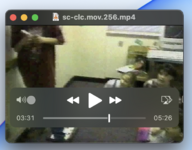You can probably do this with either flattenMooV, as Daxeria mentioned, or MoviePlayer 1.0 or 2.0 on a machine that has QuickTime 1.x-2.x installed. Here is QuickTime 2.1 under System 7.1; you want to do a
Save As... and hit "Playable on non-Apple computers":
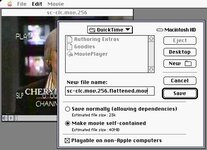
However don't expect modern QuickTime player to understand a Codec that old; we'll need VLC:
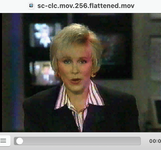
...because the codec is the original Road Pizza from QuickTime 1.0...
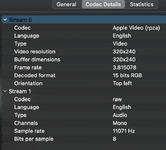
...but ffmpeg can probably take care of that!
Or, it could if it's support for very old codecs wasn't wonky:
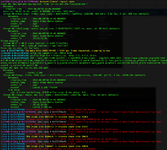 (I'm hoping "this should not happen" shows up in a future FloppyEmu error message.)
(I'm hoping "this should not happen" shows up in a future FloppyEmu error message.)
... so let's deconstruct the movie into lossless frames and audio:
ffmpeg -i sc-clc.mov.256.flattened.mov frames/frame%05d.png
ffmpeg -i sc-clc.mov.256.flattened.mov audio.wav
... and weave them back together:
ffmpeg -framerate 4 -i frames/frame%05d.png -i audio.wav -c:v libx264 -pix_fmt yuv420p -c:a aac -b:a 192k sc-clc.mov.256.mp4
This (specifically, the yuv420p statement) gets us a file that will both QuickLook correctly, and play back in modern QuickTime Player. The frame rate was a guess (based on classic MoviePlayer reporting ~4 fps on a 040, and VLC thinking it was 3.8 something), but it turned out to be correct.
